arranging by height
There are a variety of guidelines for designing container arrangements. One of the more fundamental techniques is to use height as the main design element. There are a number of ways height can be incorporated into a design.
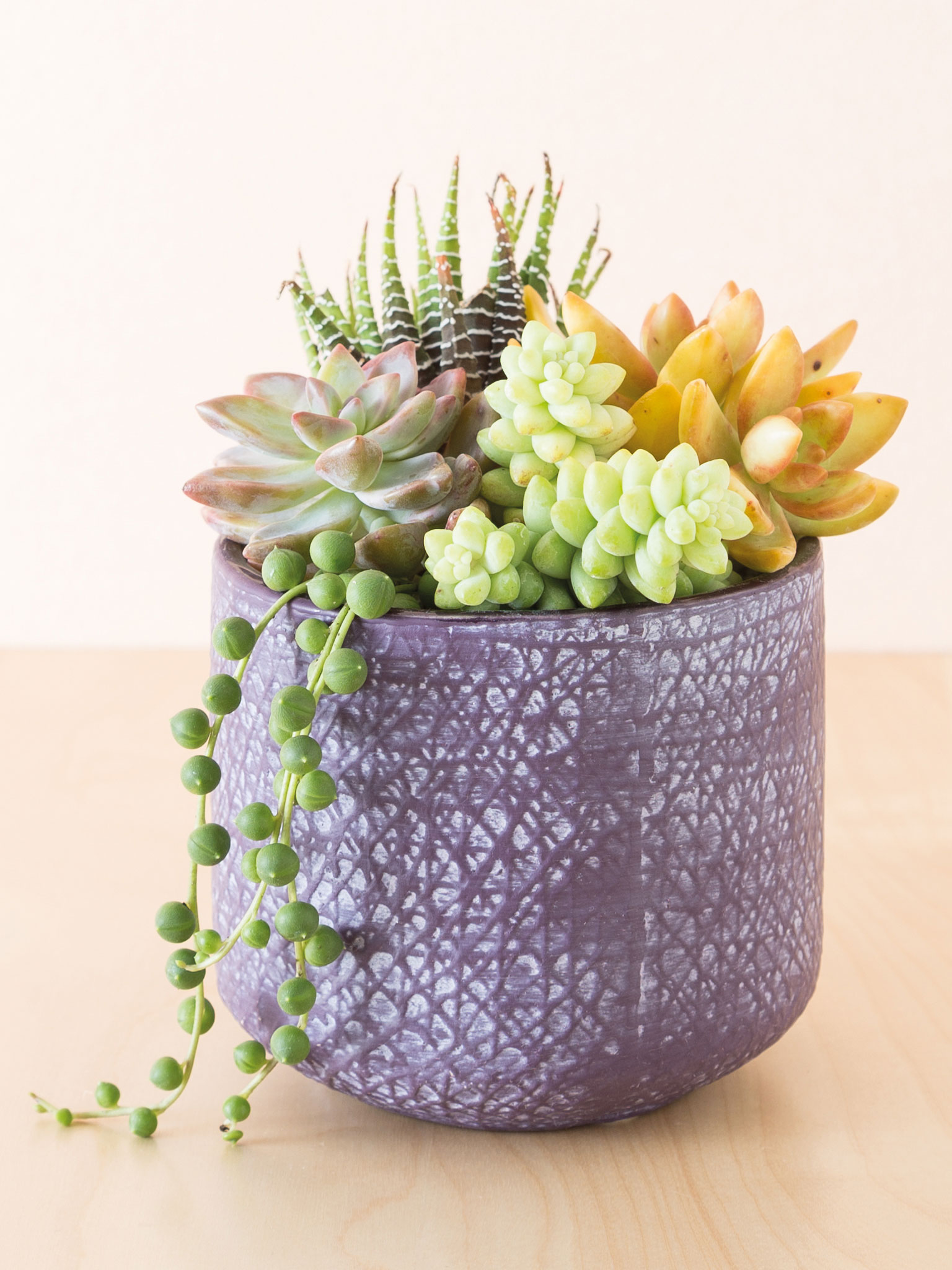
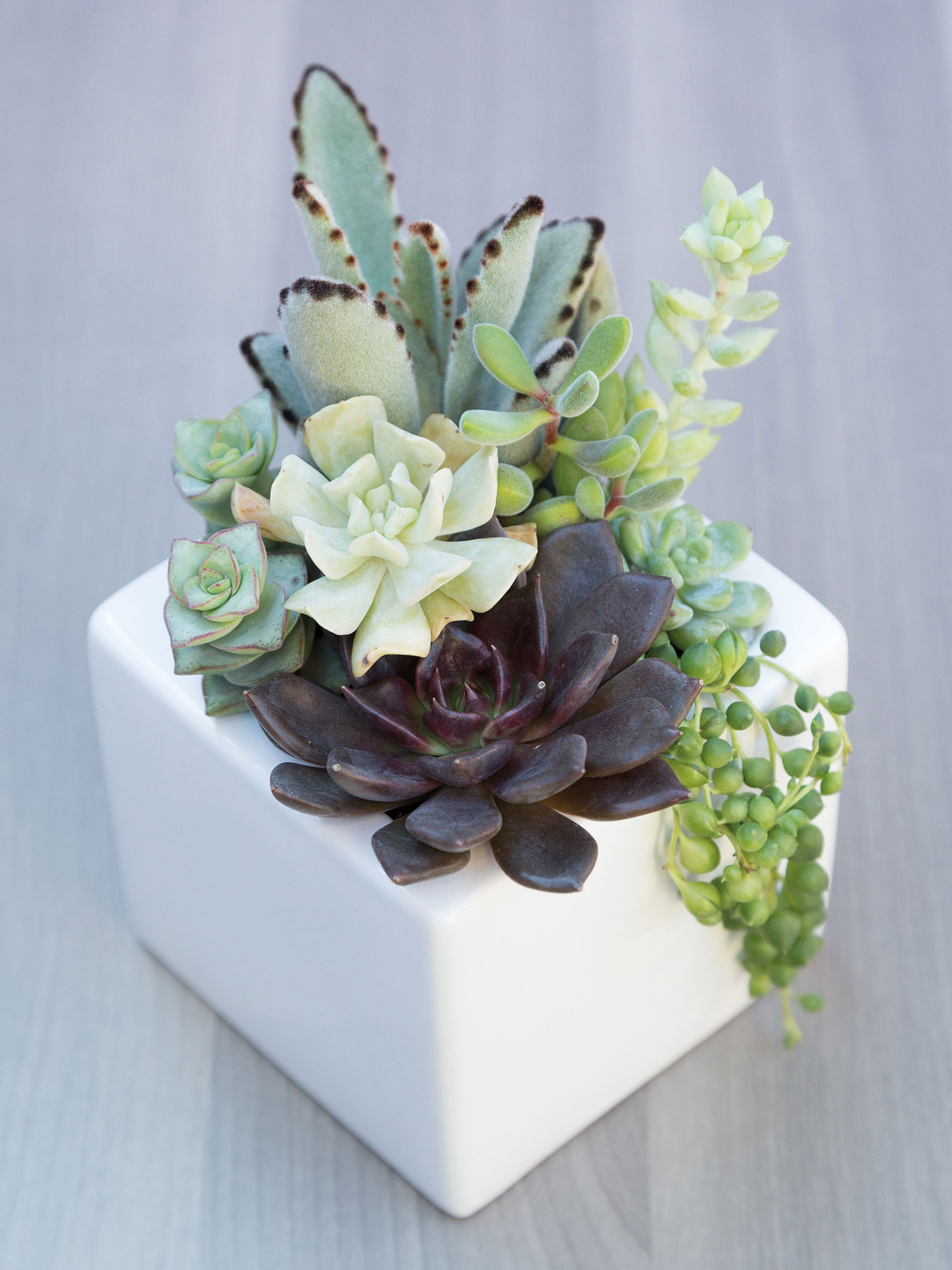
thrillers, fillers, and spillers
A common and simple way to arrange plants is by using the “thriller, filler, and spiller” technique. The basic idea here is to have a variety of plants with various heights.
You start your arrangement by placing a “thriller” plant. A thriller is something tall and striking, often spikey. It’s what gets your attention when you’re looking at the arrangement. These could be Aloes, Agaves, or Haworthias, depending on the size of your arrangement.
Next, you’ll add in “filler” plants. These are generally lower plants that fill the bulk of the arrangement. They complement or contrast with the thriller plant while adding continued interest and flow to the arrangement. Some filler plants include Echeverias and Sedums.
The “spiller” plants are the lowest plants in the arrangement and “spill” over. They break up the visual edge of the pot and give the arrangement a finished look. Senecio rowleyanus and Senecio radicans are great spillers.
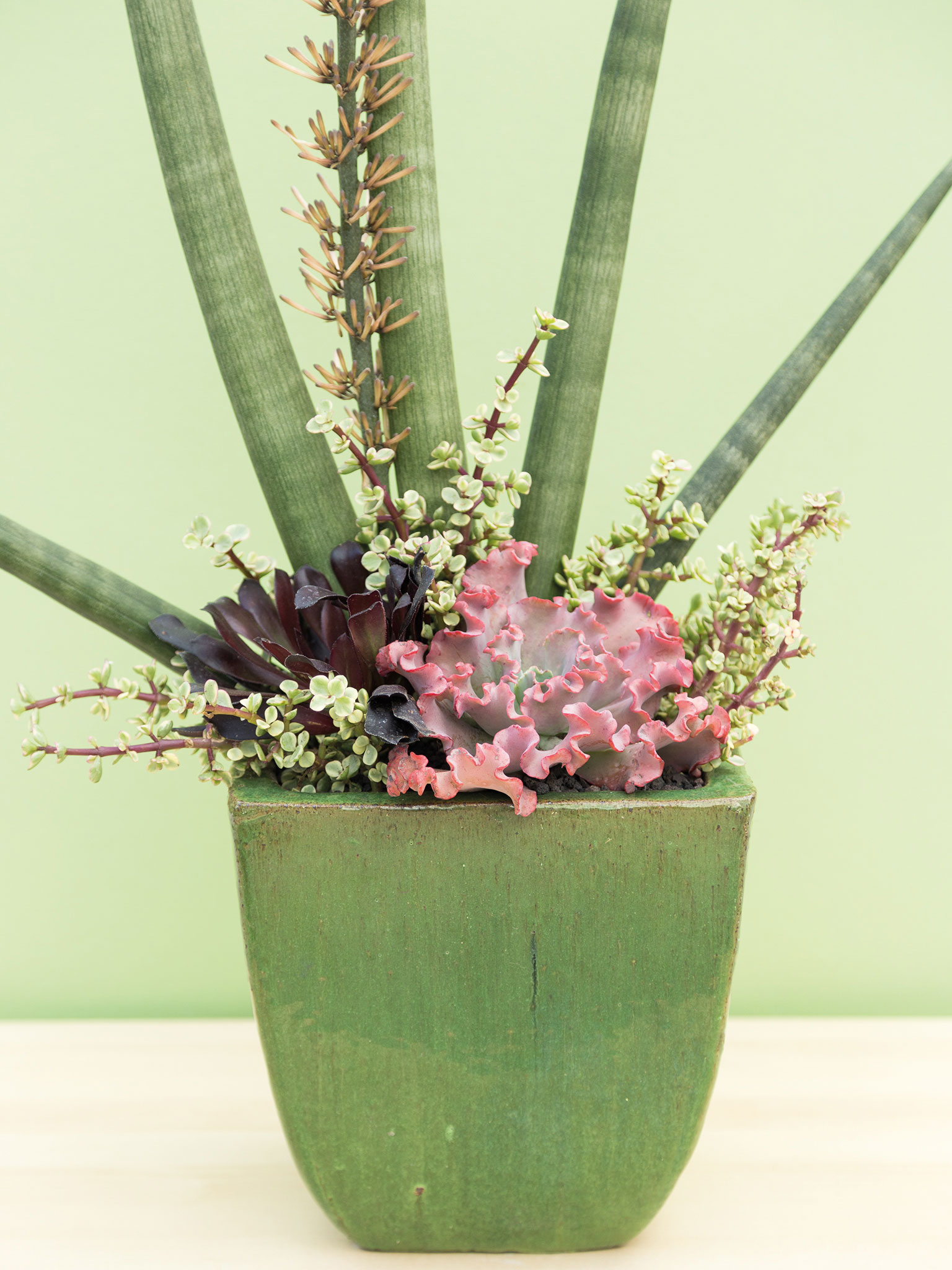
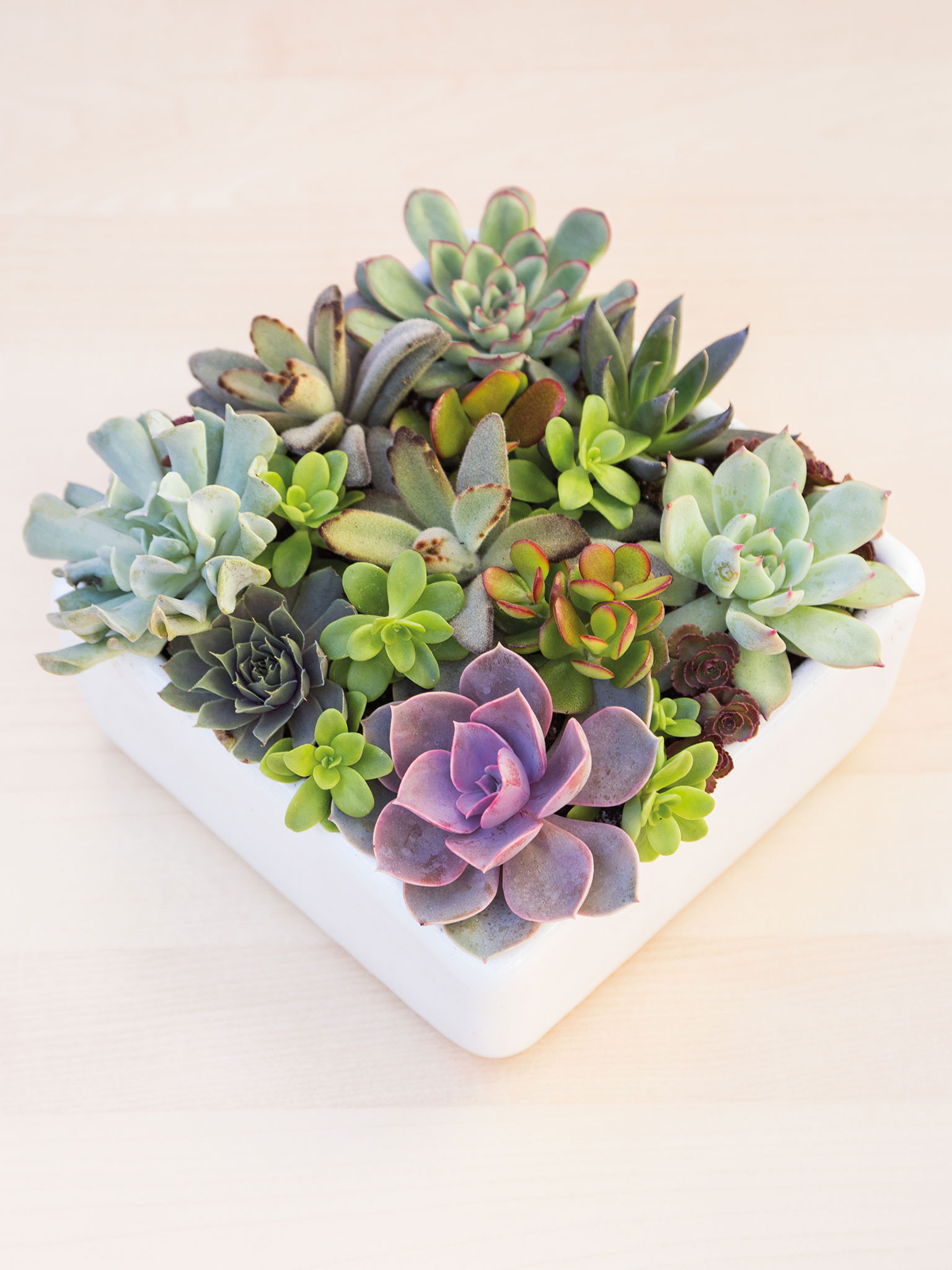
uniform height
Another technique used for arrangements is using a uniform height. Arranging this way gives more equal focus to each of the plants and draws attention to the variations in shape, texture, and color. You can do this using a variety of lower-growing plants such as Sempervivums and Echeverias or by using a variety of tall and more upward-growing succulents such as Portulacaria afra and Sansevieria cylindrica.
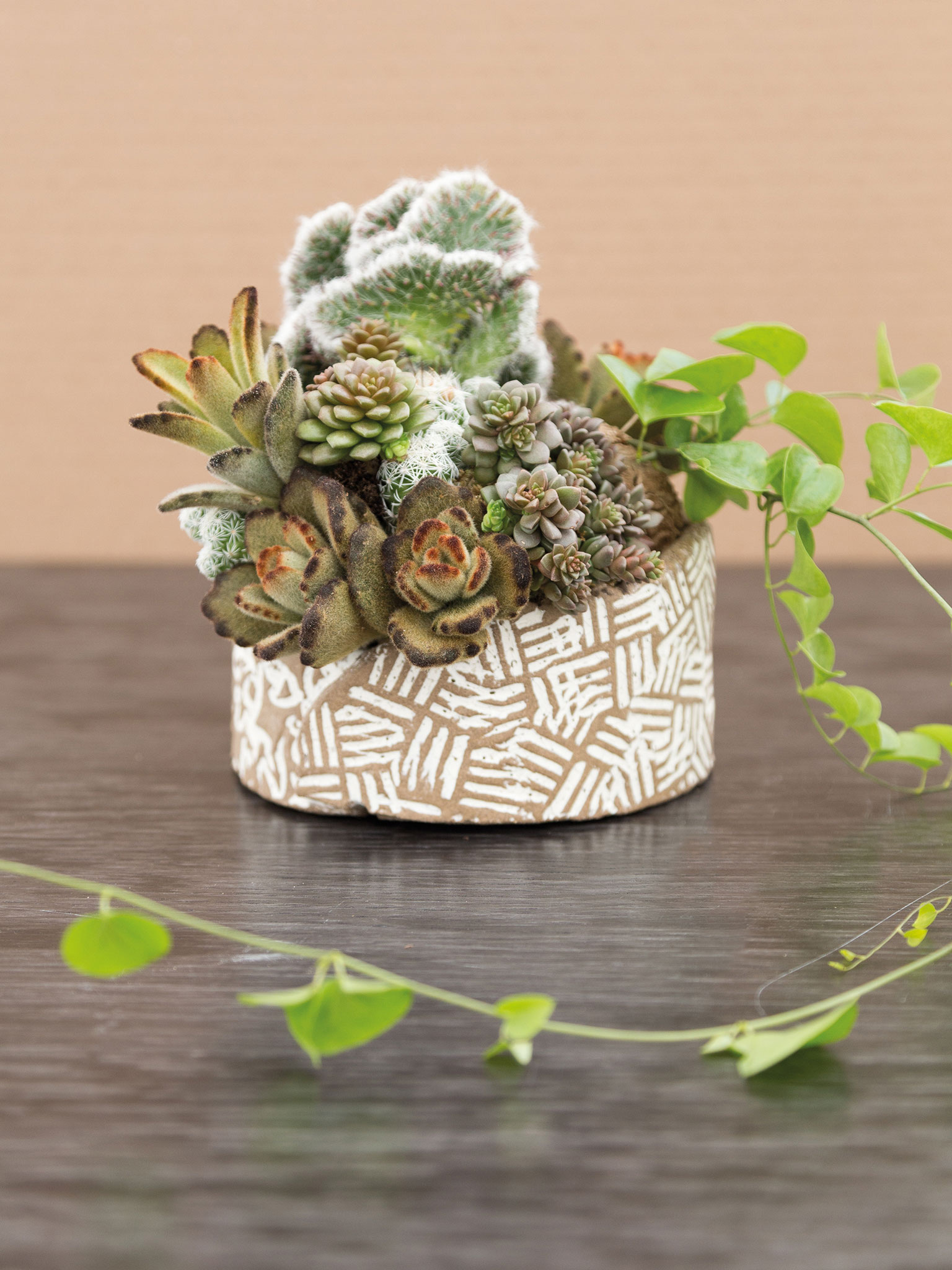
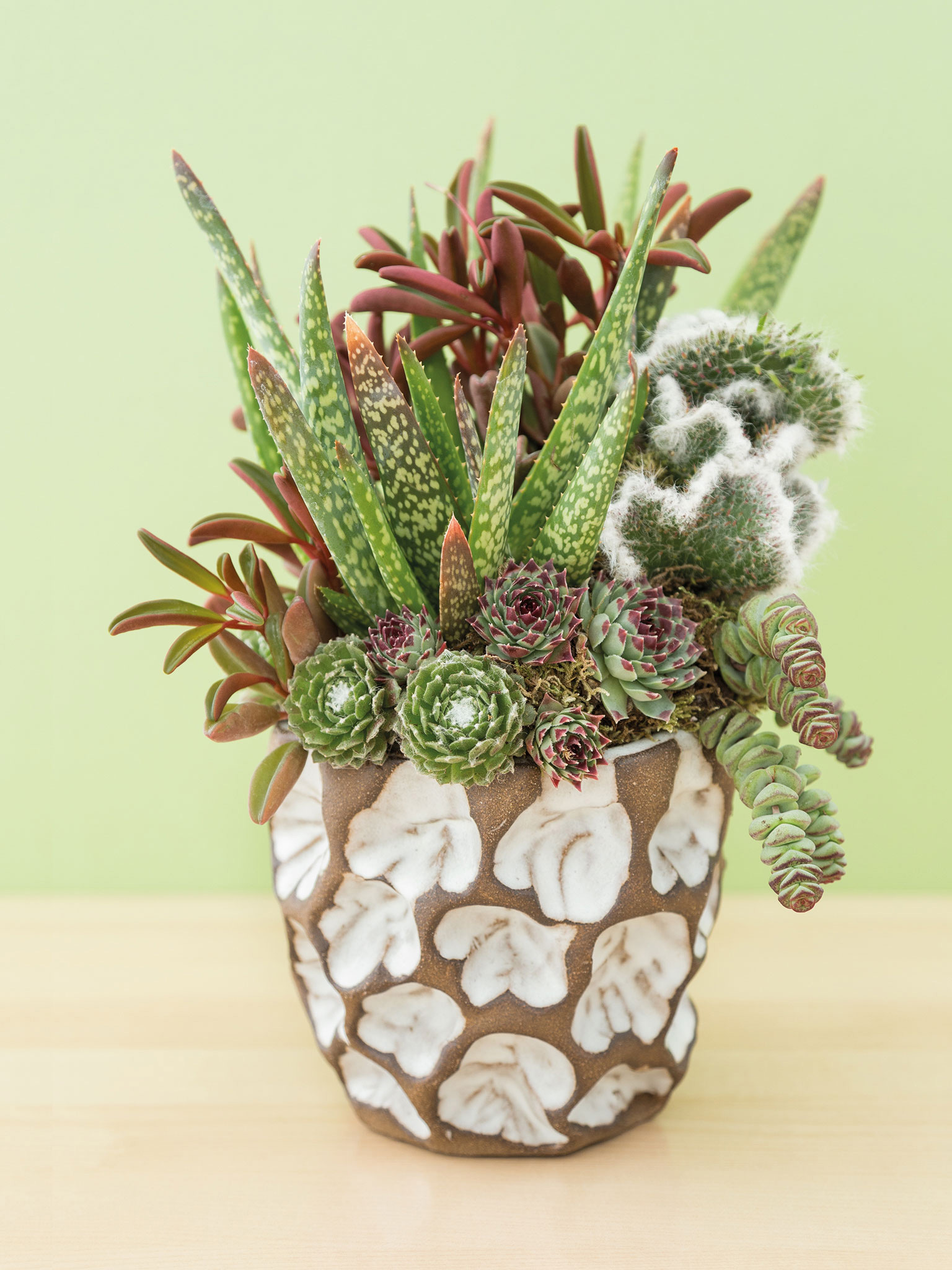
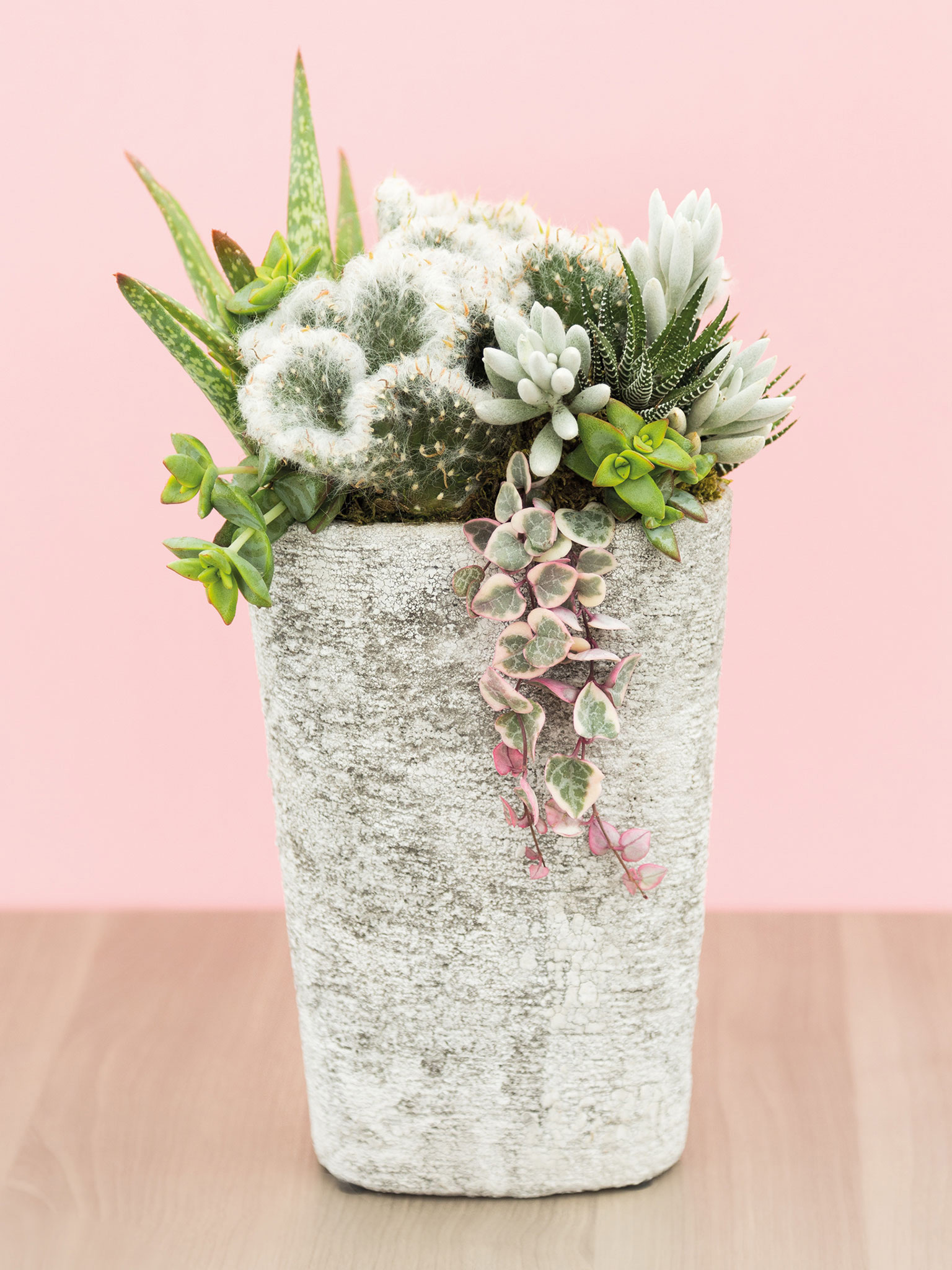

proportion
You can also design your arrangement by using the height of the pot as your guide. Succulent designer Cindy Davison recommends taking the height of your pot and multiplying it by 1½, then using that measurement as the tallest point in your arrangement. This creates a very balanced arrangement that is pleasing to the eye.
You can also design arrangements using the principle of thirds. For this type of arrangement, the height of the pot would be one-third of the entire arrangement and the plants would be the other two-thirds. You could also do the opposite proportions and have the pot be two-thirds and the plants one-third. This type of arrangement also creates a sense of balance and is visually compelling.
